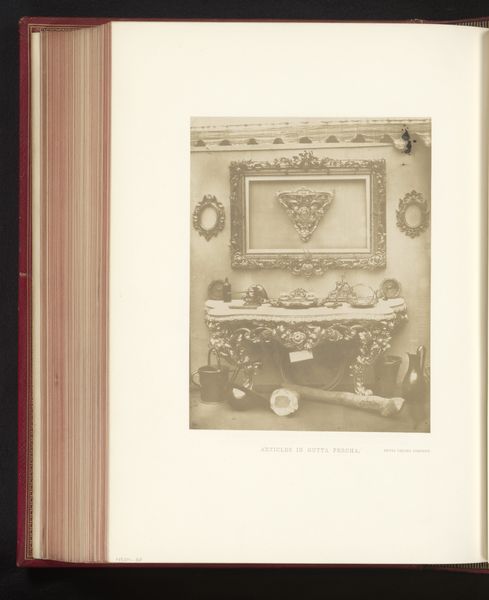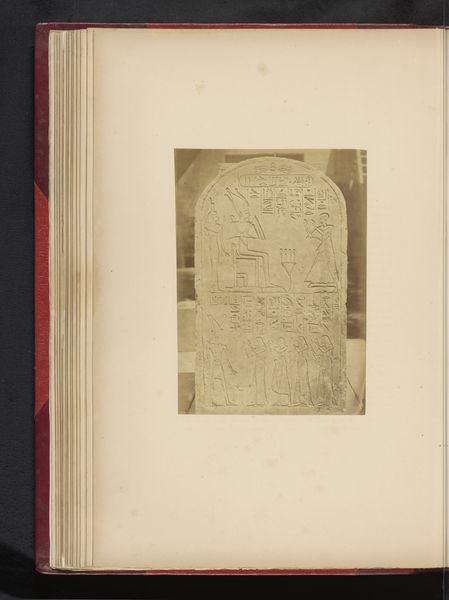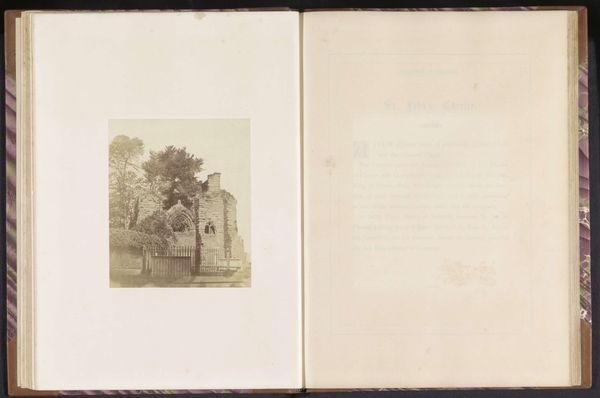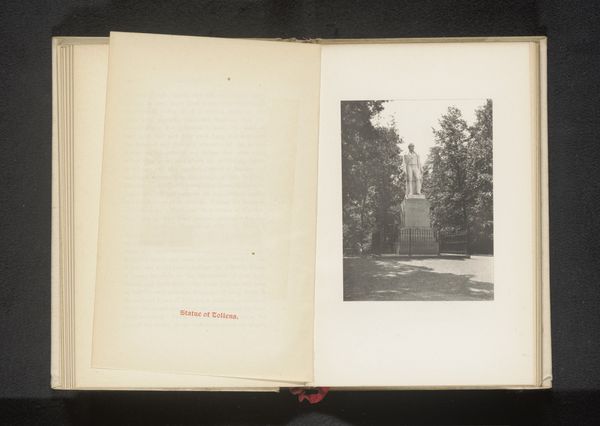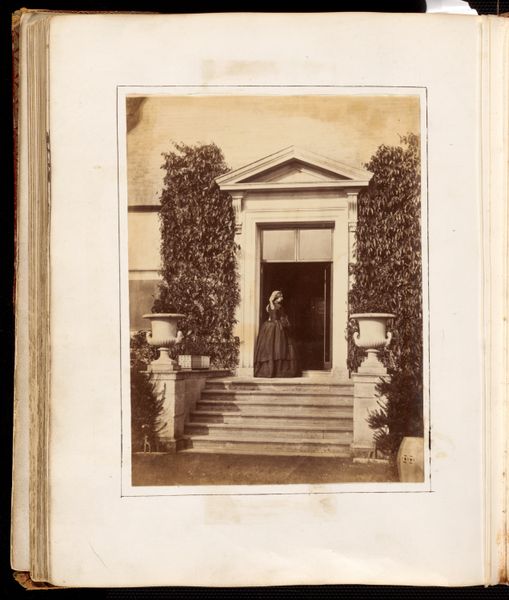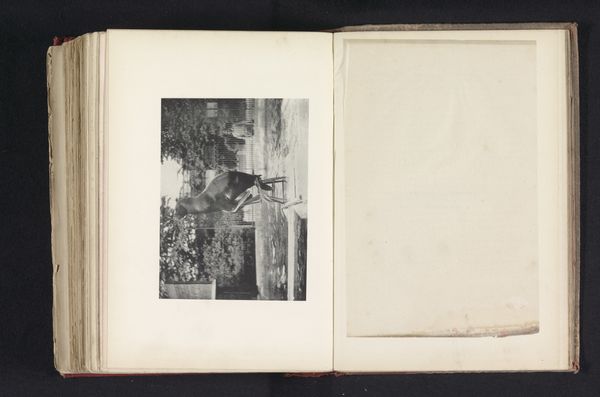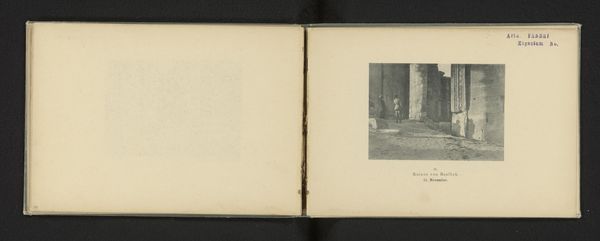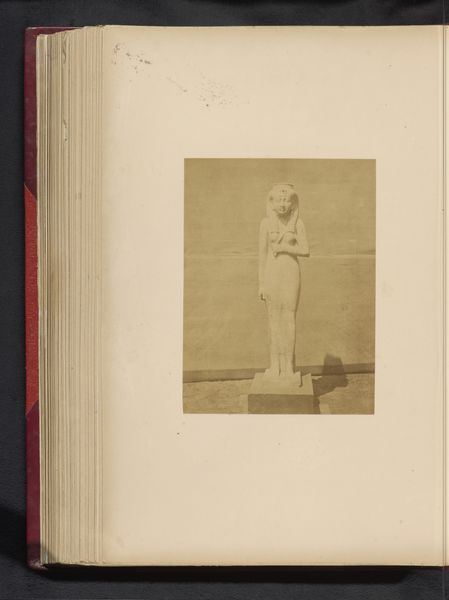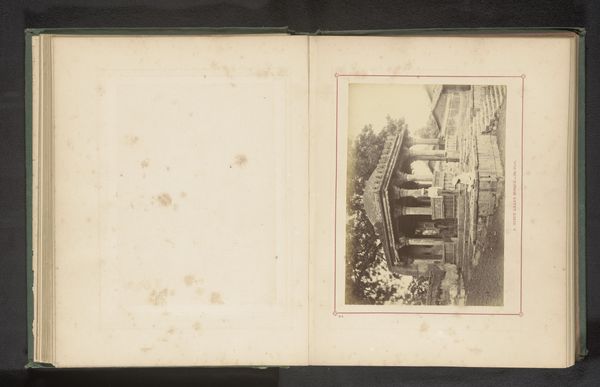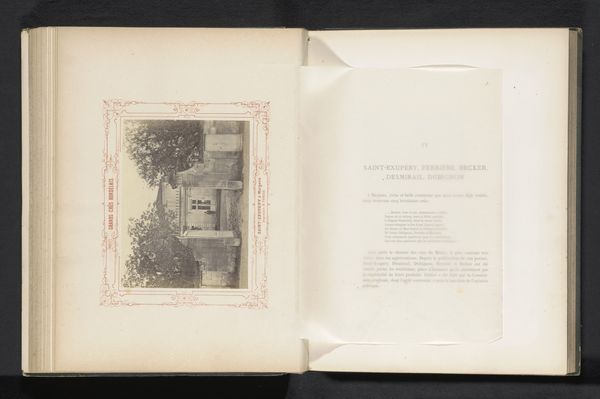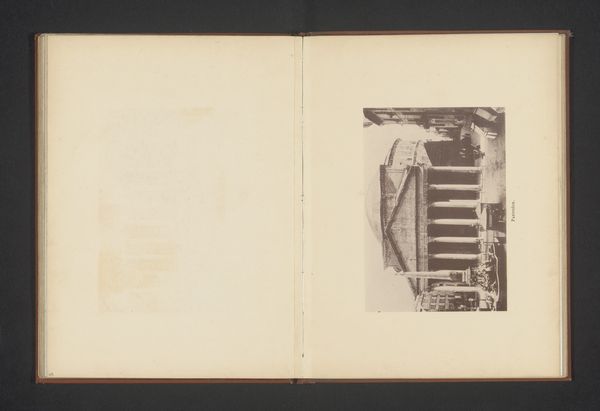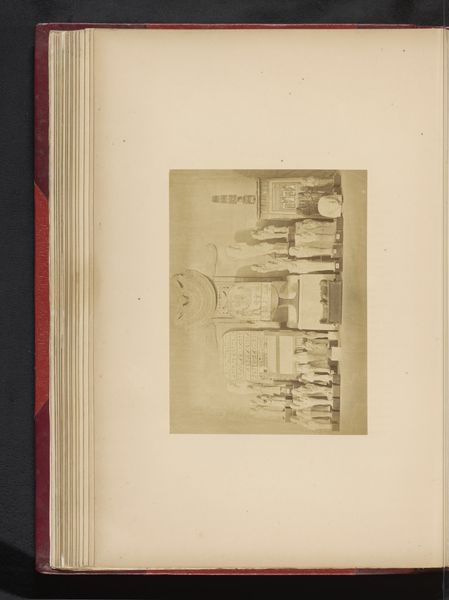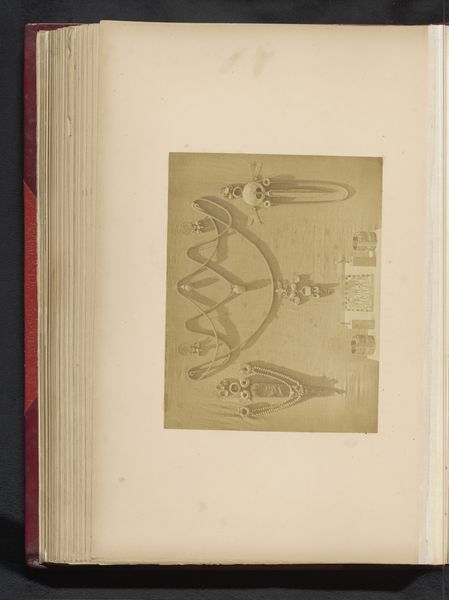
Romeins marmeren standbeeld, gevonden in Tell-Mokdam, in de tuin van het Boulaq Museum in Caïro, Egypte before 1871
0:00
0:00
print, photography, sculpture, marble, albumen-print
#
portrait
# print
#
greek-and-roman-art
#
landscape
#
classical-realism
#
photography
#
ancient-mediterranean
#
sculpture
#
marble
#
albumen-print
Dimensions: height 241 mm, width 184 mm
Copyright: Rijks Museum: Open Domain
Curator: This albumen print, taken before 1871 by Hippolyte Délie, captures a Roman marble statue discovered in Tell-Mokdam, within the Boulaq Museum garden in Cairo, Egypt. What strikes you first about this photographic image? Editor: Immediately, it’s the soft tonal range that attracts me—sepia tinged, almost monochromatic—that creates a rather still and melancholic atmosphere despite the bright, open setting of a garden. Curator: That stillness speaks to the statue's symbolism, doesn't it? Found in Egypt, this Roman marble suggests cultural appropriation and the conquering of one culture by another. Note also the windows, seemingly blind, on the wall behind the statue: The lack of vision gives an uncanny feel, and perhaps hints at the decay of vision and insight. Editor: An insightful reading. From a formal perspective, I'm interested in how the sculptor rendered drapery. See how the play of light and shadow emphasizes the folds and gives a sense of volume despite the planar frontality required by its placement on a pedestal before architecture. Curator: The statue is framed deliberately, juxtaposed against the ordered facade of the building, but partially obscured by plants allowed to grow wildly, perhaps indicating an eventual victory of organic nature. Editor: Do you see, perhaps, a subtle dialog taking place, from a semiotic point of view, between geometric and non-geometric? Also, it presents us with the inherent tensions when attempting to record three-dimensional sculpture using two-dimensional photography. Curator: Precisely! These ancient artworks hold countless echoes, both intentional and accidental, reflecting their creation and journey through time and perception, continuing to offer new meaning with each encounter. Editor: Absolutely. And by interrogating not just the image itself but the photograph as object and artifact, it allows for continuous layering of meaning that opens channels of interpretation, extending from the time of the Roman sculptors to ours.
Comments
No comments
Be the first to comment and join the conversation on the ultimate creative platform.
